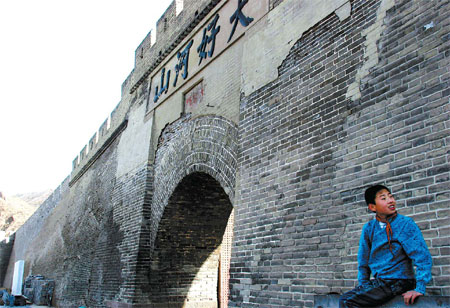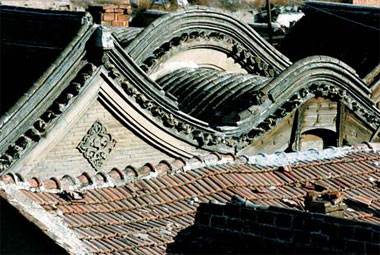Few foreigners have heard of Zhangjiakou, an old foreign trade city in northern China, but the name Kalgan might ring a few bells for elderly Russians.
Kalgan, in fact, is Zhangjiakou, a city located in the northwest of Hebei Province.
In the early 1900s, the inland city was all the rage. When a Russian businessman reached here, it meant that he had arrived in China.
To explore its history of trade, it is best to start off in Dajingmen, once an important pass on the Great Wall.
 |
|
Dajingmen, an ancient pass of the Great Wall, bears witness to the ups and downs of Zhangjiakou.
|
Built in 1458, Dajingmen was founded on the remains of the Great Wall, dating from the Northern Wei and Northern Qi (AD 386-577) dynasties. It was not only a military stronghold, but also an important pass for Han, Mongolian and Hui people to conduct trade and share culture.
As I stood at the 9-m-wide gate, the fierce wind made me feel like I could be blown away like an empty sack.
Meanwhile, a group of local elderly women started the yangge dance, beside the drab gate, for entertainment.
They dressed traditionally, in bright pinks and greens, but also wore fashionable items such as sunglasses and high-heeled shoes. Despite the cold, their dance made the nearly 600-year-old pass look lively.
I gathered my strength to reach a platform on the top of Dajingmen, from where I could see the city below me. On one side, the old town was in shades of gray; on the other side lies a new urban district where high-rise buildings have sprung up.
The platform's west brick wall collapsed in 1995 after heavy rainfall. It was rebuilt a year later but remained closed. The east section, which connects with the Great Wall, remains open to the public.
Another tourist attraction is Buzili, known as the birthplace of Zhangjiakou.
The 28-hectare town was founded in 1429, as a defense against the Mongolian cavalry from the north. This could explain why the castle-like compound initially had two doors - in the east and south. A smaller northern door was opened a century later, featuring 2-m-high roadblocks on either side, designed to stop the enemy's horses.
There are more than 10,000 residents in Buzili, with a large elderly population. Walking in the town was like entering a labyrinth. The narrow alleyways are so confusing that I would have got lost without a guide.
I was led to Yuhuangge, a Taoist temple worshiping the Jade Emperor, the supreme deity of Taoism.
After the founding of New China in 1949, the temple became a residential property, until a few years ago, when it was put under state protection.
 |
|
Curving roofs of the old dwellings are bathed in the sunlight.
|
Curving roofs of the old dwellings are bathed in the sunlight.
But renovations haven't started yet. The compound was desolate and full of broken bricks and timber. Still, in one of the rooms, visitors can find 400-year-old frescoes, which were discovered accidentally a few years ago.